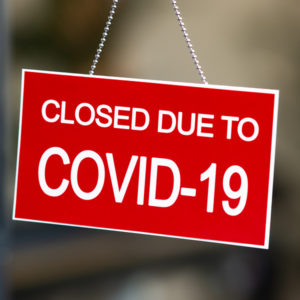COVID-19 exposed the vulnerability of several businesses and industries that were forced to modify or cease operations. Two words or phrases come to mind when I think of how businesses — both big and small — have and continue to navigate the global pandemic. The first is “consumer needs” and the second is “flexibility.”
At the start of 2020, my organization, Yowie Group, had nearly finished compiling its marketing plan for the 2020-2021 fiscal year. This is a huge undertaking and data from previous years demonstrated that Yowie was growing in terms of product awareness and demand, so our marketing budget was set to continue supporting that growth.
However, once COVID arrived as a global pandemic, the marketing budget quickly shrank to a size I knew would require ingenuity and resourcefulness to be effective. Our priority — our consumer — was front and center. In this crazy and very surreal time, what was it that our consumers needed?
The retail reality was that our sales were dropping as novelty candy products are typically an impulse purchase, and trips to the store were sharply curtailed by lockdowns. Despite this, we chose to focus on what our consumers needed even more than a physical product. Working parents found themselves at home with children, juggling their workloads, their children’s switch to e-learning, cooking at home three meals a day, and having to do it all simultaneously!
This is where we quickly stepped in to offer applicable, readily available content to our consumers across our social channels, even creating a whole new section on our website, to help in very practical ways.
Yowie, as an educationally focused brand, wanted to be there to provide all sorts of easy activities, crafts, games, videos — anything and everything we could think of to help our consumers keep their little ones busy, engaged and learning while they might need to take a Zoom call or put together lunch. We wanted to be there for consumers when they needed us most, with resources they could depend on to solve these new everyday challenges. It was all about helping meet their needs in the best way we knew how, which for us was by focusing on our digital communication channels in a big way.
In the face of adversity, we adapted quickly and a lot of focus was put on our ability to be flexible. We had to rethink our existing marketing plans and be flexible enough to see things from a new angle and within a new reality. Even though sales were suffering, we found ways to fill a dire need and make a difference in children’s and parents’ lives. By offering free creative content and an abundance of fun educational resources, we generated more awareness in a way that had not previously been a priority. Yowie was helping parents keep kids occupied at home while simultaneously expanding their knowledge through virtual activities.
Flexibility also had to come to bear in many other aspects of our business from re-looking at raw material options, to finding new potential vendors, to investigating alternate production locations and shipping options. I truly believe that one of our greatest assets over the last two years has been the impressive amount of flexibility demonstrated across every area of our business. A rigid branch will break in a storm, but a flexible one will bend and survive. That was the case.
Now that people are shopping again, our efforts to focus on our consumers’ needs are paying off. Our fan base has grown significantly. Adults are purchasing our surprise-inside chocolate eggs to reward children with a treat and a surprise that creates an educational moment.
It is unfortunate that many wonderful businesses — some with long histories and others with incredible products or services — had to close their doors. For the companies that do remain, I advise business leaders to ask them about their stories. How did they survive? What did they do to weather the storm? How did they practice and inspire resilience among their teams?
It is hard to believe we are now past the two-year mark of COVID-19. I am also proud to say we inspired resilience — among ourselves and the families we serve. We don’t know what tomorrow brings, but if we are able to remain flexible and keep our focus on our consumers’ needs, we stand a good chance at navigating what comes our way.


